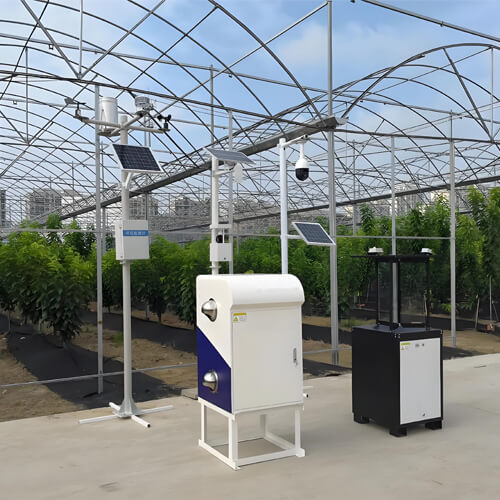The Automated Weather Station (AWS) is an important tool for meteorologists, environmentalists and other weather enthusiasts. It provides comprehensive data on weather elements. In this blog, we’ll delve into the components, price, benefits, and highlight the diverse applications of automatic weather stations.
What is automatic weather station?
Automatic Weather Stations (AWS) are observation devices that automatically collect, store and transmit weather information. They can be individual stations or part of a complete meteorological network.
Automatic weather station images

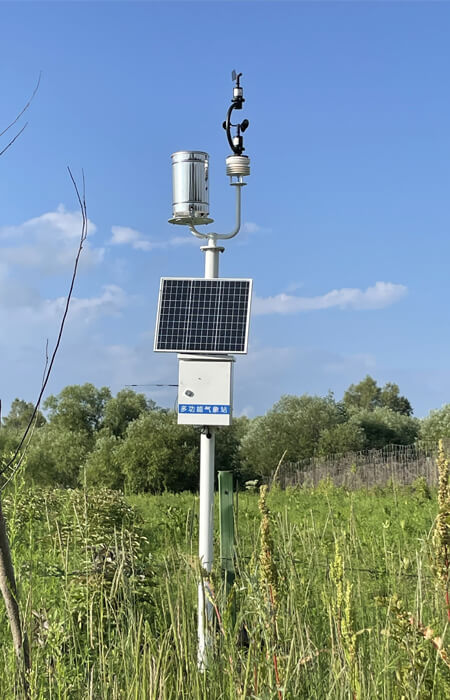
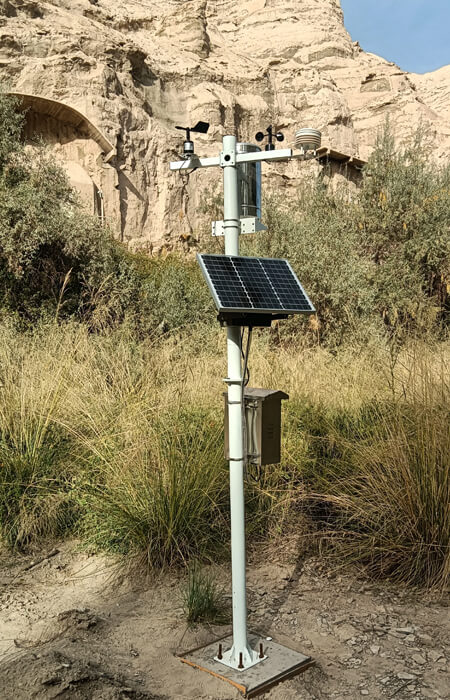
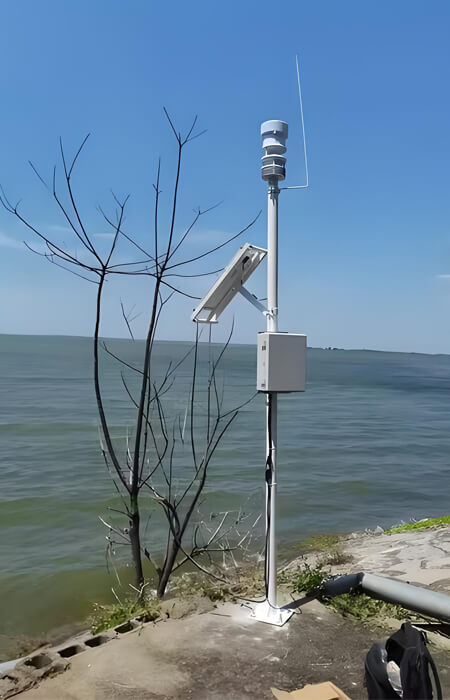
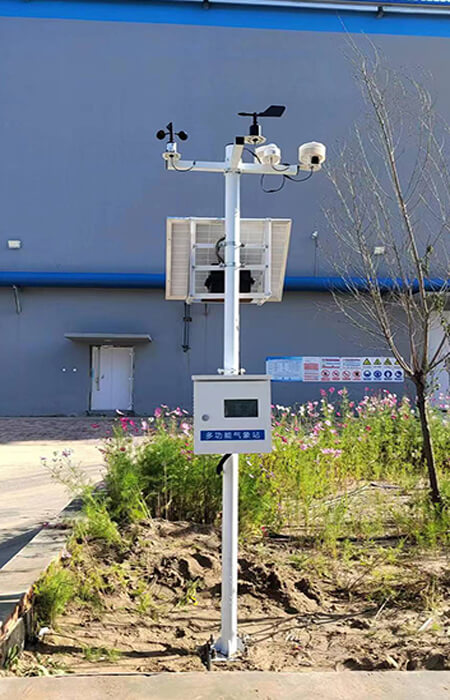
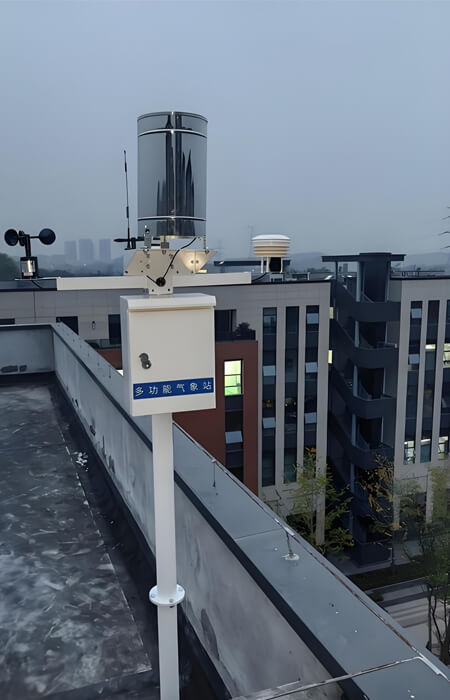
Most automatic weather stations consist of five components: weather sensors, data collectors, power supply systems, communication systems and mounting accessories. These units work together to realize the automatic collection and transmission of meteorological data. The following is a detailed description of each component:
1. Weather sensors
A complete weather station system usually consists of several weather sensors, most commonly monitoring wind speed, wind direction, temperature, humidity, solar radiation, atmospheric pressure, rainfall, and other surface weather observations. Therefore, the following types of weather station sensors are commonly used:
- Wind speed sensor — common types include cup anemometers and ultrasonic anemometers.
- Wind directon sensor — It is usually used in conjunction with a wind speed sensor to provide complete information on wind speed and direction.
- Temperature sensor — it is usually mounted in a louvered box to prevent direct sunlight and other environmental factors from affecting the measurement.
- Humidity sensor — Installed in the louvered box together with the temperature sensor, common humidity sensors include capacitive, impedance and conductive.
- Atmospheric pressure sensor — can detect small changes in barometric pressure to help forecast the weather, such as storms and sunny days.
- Solar radiation sensor — used to measure the amount of solar radiation, mainly including photosynthetically active radiation sensors and total radiation sensors.
- Rain gauge — used to collect and measure precipitation. Common rain sensors are tipping bucket and weighing type.
- Lightning detection sensor — detect and record lightning events, including the frequency and intensity of lightning.
- Visibility sensor — used to measure atmospheric transparency for traffic, marine and aviation safety.
- Gas sensor — for example, measure atmospheric carbon dioxide concentration, helping to monitor greenhouse gas levels and analyze climate change.
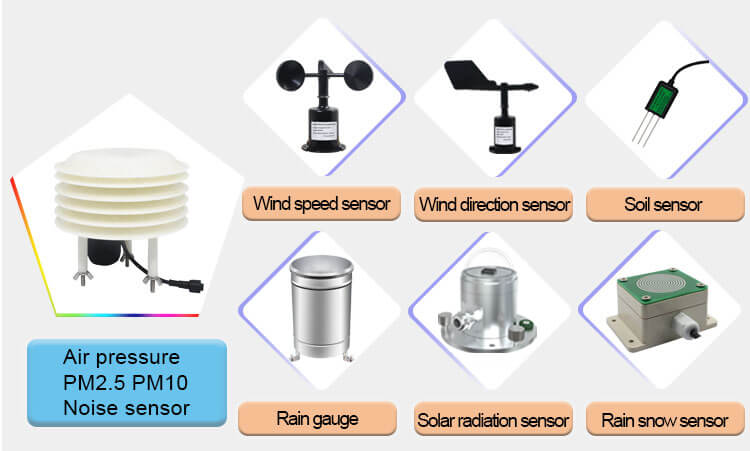
In addition to these basic weather instruments mentioned above, there are many other weather sensors suitable for specific monitoring environments, such as soil sensors for agricultural monitoring weather stations, laser snow depth sensors for traffic monitoring weather stations, and liquid level sensors for water level weather monitoring stations. With the continuous development of IoT technology, the types of weather sensors are becoming more and more comprehensive. Weather enthusiasts can freely choose suitable weather sensors according to different monitoring points.
2. Data collector
The data collector is the brain of the automatic weather station. It can not only collect, store and process data from all sensors, but also send down the commands issued by the monitoring platform to each sensor. Even in the case of network signal loss, the data can be reliably saved through the local storage function. When the meteorological parameters exceed the preset thresholds, the data collector can send alarm information through SMS, email and APP push.
3. Power system
Just as humans need to eat to sustain their life activities, automatic weather stations are kept working by a power system. Solar panels and utility power are two common power systems. The majority of AWSs can be powered by both to ensure that the weather station can function properly in the event of a sudden power outage.
4. Communication system
Communication system is the “nerve organization” of automatic weather station. On the one hand, it transmits data and commands between sensors and service platform, and on the other hand, it transmits analyzed data to users. It realizes the information transfer of data from measurement to users through wired or wireless transmission. Common communication methods are as follows:
- RS232 wired, communication distance 0-10m
- RS485 wired, communication distance 0-1000m
- LORA wireless, communication distance 0-3km
- Wireless microwave radio, communication distance 0-500m
- GPRS wireless, unlimited communication distance (with additional GPRS traffic costs)
- WiFi communication, unlimited communication distance (must be set up with WiFi)
5. Mounting accessories
The mounting accessory is the skeleton of the automatic weather station. It supports the proper functioning of the sensors and other systems. The correct mounting height and angle are important for the measurement results. The main mounting accessories are:
- Bracket pieces, expansion screws, etc., made of stainless steel.
- Risers and beams, height can be designed according to the actual situation.
- Waterproof box, outdoor use to protect the collector and power system.
- Lightning protection, MSP-1 lightning rod and MGP-1 ground device.
Automatic weather station price
| Automatic Weather Station Price List | ||
|---|---|---|
| Agricultural weather station | Traffic weather station | Campus weather station |
 |  |  |
| Price: 1288$ | Price: 1645$ | Price: 1186$ |
| Forest weather station | Ultrasonic weather station | Portable weather station |
 |  |  |
| Price: 729.6$ | Price: 991.8$ | Price: 634.5 |
Automatic weather station advantages
Automatic weather station system
1. Automated monitoring
Automation is the biggest advantage of AWS, which can autonomously collect, process and transmit many kinds of weather data. And after installation, the automatic weather station can continuously monitor the changes of weather elements and provide real-time weather data.
2. High Accuracy
The automatic weather station adopts advanced Internet of Things and weather sensor technology. It can both accurately measure various meteorological data and reliably transmit meteorological information.
3. Remote monitoring
The automatic weather monitoring system can lay out weather stations in multiple locations and realize centralized control. Even in remote mountainous areas or polar regions, it can layout and collect meteorological information, so as to carry out scientific climate research.
4. Data Sharing
The data of automatic weather stations can be transmitted through the network, which facilitates data sharing with other meteorological stations, meteorological departments and environmental protection agencies, and promotes the exchange and application of meteorological information.
5. Multi types
With the continuous development of technology, there are more and more types of the small weather station, ultrasonic weather station, portable weather station, etc., and users can match the weather sensors according to their needs. Meet the monitoring needs of different regions.

AWS VS Traditional Weather Station
1. Different monitoring methods
Traditional weather stations mainly rely on manual operation. Observers need to record wind speed, wind direction, humidity, temperature and other data regularly. The whole process takes a long time, and the weather data will be affected by human factors. With advanced sensors and automation technology, automatic weather stations can automatically complete the process of data acquisition, transmission and processing. The data is more accurate and can reduce labor costs.
2. Different data processing
The data transmission of traditional weather stations relies on manual transcription and telephone, which is inefficient and easily affected by human factors. In contrast, the automatic weather station utilize wireless transmission technology to realize rapid data updating and sharing. It is also equipped with a powerful data processing system that can analyze, process and store massive data.
3. Different accuracy
The observation range of traditional weather stations is limited and can only cover a small area. Due to the high workload of human involvement, the error of measurement is relatively large. While automatic weather stations can cover a wider monitoring area by using monitoring equipment and optimized observation algorithms. At the same time, the automatic weather station is capable of continuous observation, which improves the temporal and spatial resolution and accuracy of the data.
Application of automatic weather station
Weather forecasting: the automatic weather station can provide current weather and predict weather changes in the coming period, which helps city residents to prevent extreme weather such as heavy rain, hurricanes, etc. in advance. This effectively protects people’s property and life safety.
Agricultural production: Climate and soil are two important factors affecting agriculture. Based on soil data, farmers can choose the best growing crops for planting. Based on weather data, farmers can determine the proper irrigation and fertilization, thus scientifically increasing agricultural productivity.
Transportation safety: In the field of transportation, the navigation of aircraft and ships is strongly influenced by weather changes, and it is extremely easy to deviate from the correct navigation route in foggy or stormy weather. Data from automatic weather stations and satellite radar systems help mariners and aviators to travel safely in complex weather conditions.
Environmental protection: Automatic weather stations also play an important role in environmental monitoring. It can monitor some of the air pollutants, and the wind speed and direction data provided can predict the direction of pollutants.
Urban planning: The automatic weather station can monitor air quality, noise and other environmental indicators to help urban planners better plan urban development, such as where to build green belts, where to build sound insulation facilities, where there will be traffic congestion and so on.

